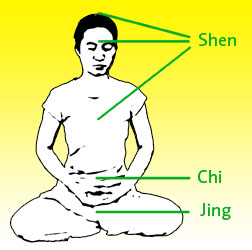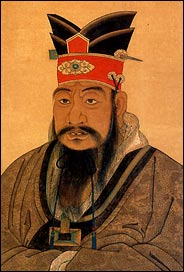A. Shopping Malls and Sacred Place

Southcenter Mall – The mall I chose to visit
Can shopping malls be considered a sacred place? According to Jon Pahl, “Malls have achieved their lofty status as temples in an empire of markets” (Pahl, 2007). Shopping malls have enchanting effects, as Pahl says. He brings up a very valid point, that a typical mall will not have windows looking out but that “[…] mall architecture makes possible experiences of water, light, trees, words, food, music, and bodies that, when combined with the labyrinthine design of the concourses, invariably makes one feel entranced, dazed, disoriented, and, finally, as if one is lacking something” (Pahl, 2007).
Water is also very symbolic. Many religions incorporate water into ceremonies or consider it to represent that which is pure. Most malls will have some sort of a water fall or fountain. In my recent adventures to several malls, I found that two out of the three had some water features, typically in the center of the mall. I had never realized it before, but there are no windows to the outside world. Just like water, lights have a vital symbol, too. Many malls will have a huge skylight or sets of lights with high beams. Trees, often related to as life, also grace the mall atmosphere frequently and never once will you go into a mall with a dying tree or plant.
Every mall has a target. With every song, advertisement, or phrase, you feel like a part of a community, which is exactly their intention. “[Many] senior citizens walk in mall corridors to exercise because they find malls to be sanctuaries of civility” (Pahl, 2007). I see elders walk into malls all the time- not necessarily walking and exercising, but I do not recall seeing them carrying bags of purchased goods.
As sacred as malls seem, they are just the opposite. Malls lie all the time about their products and their value. Their architecture makes buyers feel small. Macy’s is one of the biggest stores within almost every mall, and it’s considered to be the anchors of buyers.

Macy’s means “More” luring buyers in. Located in majority of the malls all over the world
What I found interesting was, “Macy’s Means More: More Vision, More Real, More Mix, More New, More You (Pahl, 2007).” There are hidden meanings to help lure customers. Another interesting fact is that malls are not as welcoming as they seem. Malls are privately owned and can, therefore, make up their own rules. They can decide whether you look like you belong or not. From a different perspective, security is there to keep us safe, but it is not open to acceptance. Whether malls are sacred, I think, depends on the perspective from which we are looking. Personally, I do not believe malls are sacred. My purpose of going to a mall is to buy things and have a good time. As far as how I feel, I do not feel much different compared to being anywhere else. A mall can only be so sacred, so to speak.
Recently I visited my aunt and her church that she belongs to. It is the Ebenezer Lutheran Church. This church was founded on May 23rd, 1910. Comparing this church to a mall I often visit (Southcenter Mall), the sacredness of the two places are very different. Like the mall, the church had a high ceiling and was decorated with greenery.

Ebenezer Lutheran Church in Lake Stevens is the church I visited
The church had glass-stained windows along the side of the building and there was a big organ in the front near the altar. I believe that
churches or temples are as sacred as it gets. A church is there for people to better themselves and a mall is there for profit. Malls are, as you can imagine, very rowdy and very limited in terms of acceptance. Ebenezer Lutheran Church is open to anyone. In short, my perspective is that malls are far from sacred.
Works Cited:
Pahl, Jon. “The Desire to Acquire:Or, Why Shopping Malls are Sites of Religious Violence.” Religion and Culture Web Forum. N.p., n.d. Web. 2 May 2013. <http://divinity.uchicago.edu/martycenter/publications/webforum/052007/desire_to_acquire.pdf>.
B. Daoism

A demonstration of the location of Shen, Chi, and Jing in the body.
“Daoism […] is chiefly concerned with cultivating virtue in one’s life, living in balance with the natural world, and, by doing so, achieving immortality” (Emrich). Generally speaking, Daoists believe that it is very important to work towards immortality using techniques of inner alchemy and outer alchemy.
Inner alchemy consists of four techniques. The first technique has to do with regulating breathing, and was named “embryo respiration” or “womb breathing” (Smits). This technique seems to be appropriately named as “Daoists sought to return to the breathing of a child in its mother’s womb” (Smits). It is thought that this type of breathing would “…alleviate the whole range of illnesses, cure plagues, prevent harm from tigers or snakes, cure afflictions like boils and warts, enable survival under water, enable walking on water, alleviate feelings of hunger or thirst, and lead to long life. The essential technique is womb breathing” (Smits). A second technique used in seeking immortality is sunbathing. This technique is only used by men, not women, and is done by “[…exposing] their bodies to the sun while holding in their hands a character for the sun written in red ink on green paper” (Smits). The reason that only men use this technique has to do with males searching for inner strength of yin, while women search for inner strength of yang. Third, the search for immortality must include exercises similar to yoga to

Yoga-like exercises practiced by Daoists to renew energy and strengthen energy.
strengthen breathing and renew their energy. These exercises also help to keep the body’s pores open. Open pores mean that energy from outside of the body are able to flow into the body (Smits). Lastly, the search for immortality through inner alchemy is sexual training (Smits). “Daoists thought that sexual intercourse could nourish life by strengthening the forces of yin-yang […which] could cure disease, make the body lighter, make the senses more acute, and increase one’s store of healthy” (Smits). Some Daoists believe that it’s important to have as many as 10 partners per day in order to properly achieve immortality (Smits). Outer alchemy is a bit more basic and has to do with searching for a pill or elixir that will make one immoral.
Another less technique-based way that Daoists expressed passion about the search for immortality was through art. Daoist art often consisted of “The double-gourd shape, images of peaches and blossoming peach trees, the moon, the lotus, the pine tree, and the Big Dipper [… which] all refer to the Daoist ideal of everlasting life” (Emrich).
Works Cited
Emrich, Elizabeth. “How To Live Forever.” n.d. Johnson Museum of Art. 6 May 2013. http://museum.cornell.edu/exhibitions/how-to-live-forever-daoism-in-the-ming-and-qing-dynasties.html
Smits, Gregory. “Later Daoism”. n.d. Pre-Modern Chinese History. 6 May 2013. http://www.personal.psu.edu/faculty/g/j/gjs4/textbooks/PM-China/ch7.htm
C. Confucianism

Painting of Confucius
“Confucianism is the complex system of moral, social, political, and religious teaching built up by Confucius and the ancient Chinese traditions” (Shinn, n.d.). Confucius was a very smart boy born into a wealthy family. He became the minister of justice when he was older and tried to keep the people on the path of duty. The people were not interested in moral order, but rather seeking common pleasures, so Confucius resigned and went around the country trying to find a ruler who would listen to and adopt his teachings. He searched for thirteen years with a group of his devout followers. He was absolutely determined to bring his teachings to the people and even risked being killed by his enemies (Shinn, n.d.). Confucianism has many goals and of course those goals vary among Confucians, however, the primary and commonly known known goal of Confucianism is to help people become virtuous and well mannered.
C4) The Confucian Virtues
The five major Confucian virtues are jen, yi, li, chih, and hsin. Jen is a virtue of benevolence, charity, and humanity. Although this alters depending on the interpretation, generation and time period, jen is generally considered the most important Confucian virtue and is compared to the golden rule of treat others as you wish to be treated. The people who practice jen should be willing die in order to preserve jen; it is that important. They feel that jen more precious than life itself. “The first principle of Confucianism is to act according to jen: it is the ultimate guide to human action” (Archie, n.d.). A person who embodies jen can become an ideal person (Confucianism refers to this as the chun-tzu or the ideal mean).
The second virtue is li. Li is the principle of gain, benefit, order, and propriety. There are two basic meanings of li. The first is “[…] concrete guide to human relationships or rules of proper action that genuinely embody jen”, and the second is “[…] general principle of social order or the general ordering of life” (Archie, n.d.). Li is all about having good manners, being polite, and following order by taking part in ceremonies, rituals, and worship. Everyone is supposed to conduct themselves with propriety and follow the social norms in order to maintain order.
The third virtue is yi which is all about righteousness and morality. It is the “moral disposition to do right” (Archie, n.d.). A person who embodies yi knows the difference between right and wrong and has a good sense of goodness. This person will know what the right thing to do in each situation is and follow that moral path.
The fourth virtue is chih which is moral wisdom. Although this is similar to yi there are some difference. Chih is based off of the belief that people are basically born good, and that knowing what is right and what is wrong is innate. Confucianism says that although people are naturally good, the origin of evil can be accounted for by three major things. First, external circumstances and the need for survival led to people doing evil things in order to protect themselves. Second, “[…] it would be our disadvantage to be moral […]” in this society and culture (Archie, n.d.). Third, our lack of knowledge cripples us from really developing our feelings and senses.
Lastly, the fifth virtue is hsin which is “loyalty and good faith” (Hays, 2012). Hsin is the cardinal virtue of faithfulness and truthfulness. One who practices hsin worships truth and absolute faith. People who practice hsin don’t just talk the talk, but walk the walk. Their actions match up with what they say. This is a big part of jen as well.
The goal of every person, according to Confucianism is embody all of the virtues, but specifically jen and li. “Together, these two virtues create a highly cultivated and disciplined person who behaves properly in every situation and who is motivated by deep care and empathy for people” (Carroll, 2010). Confucianism refers to the superior human beings as “junzi” which basically means they are perfect. Of course, perfect doesn’t mean never making a mistake, but rather these superior human beings are perfect because “Their moral character is true, their intentions are pure, and their actions are disciplined and aligned with that moral character” (Carroll, 2010).
Confucianism also really stresses Hsiao which means filial-piety or reverence. Having a Japanese father, I am personally very familiar with this term because it is a very important virtue in the eastern cultures. Filial piety is based off of the idea that you are alive because of your parents who have sacrificed everything for you, therefore it is your duty to honor your family and have absolute respect for them. According to Confucianism, in order to really practice Hsiao, you must view your parents as if they saved your life, and spend the rest of your life honoring them and giving them physical, emotional, and spiritual care. Once you have established true filial piety with your family, you then should extend this mindset out to your community, nation, and eventually the world (Archie, n.d.).
Te is another very important aspect of Confucianism. Te is all about the people in charge who are governing should have a certain personal power and moral integrity so that other people want to follow their example. The government must be honest and transparent. According to Confucianism a government is good if it can maintain three things; economic sufficiency, military sufficiency, and confidence of the people (Archie, n.d.).
Works Cited:
Archie, J. (n.d.). “Philosophy 312: Oriential Philosophy Man Concepts of Confucianism.”
Oriental Philosophy. Retrieved May 2, 2013 from web http://philosophy.lander.edu/oriental/main.html
Carroll, J. (2010) “Jen & Li – Confucian Virtues.” Retrieved May 2, 2013 from web http://www.world-religions-professor.com/jen.html
Hays, J. (2012). “Confucian Beliefs”. Retrieved May 1, 2013 from web http://factsanddetails.com/china.php?itemid=88#03
Shin, K. (n.d.). “Confucianism A Brief Summary of Confucius and His Teachings”. Retrieved May 1, 2013 from web http://www.csuchico.edu/~cheinz/syllabi/asst001/fall97/11kshinn.htm
D. Shintoism
Shinto is a community religion, “originally ‘an amorphous mix of nature worship, fertility cults, divination techniques, hero worship, and shamanism,’” and the name itself is derived from the Chinese words “shin tao,” which translate into the phrase “the way of the kami” (Ontario Consultants on Religious Tolerance, 1995). It’s an ancient religion in Japan, dating back at least as far as 500 BCE, but was not named Shinto until the 8th century CE and “Unlike most other religions, Shinto has no real founder, no written scriptures, no body of religious law, and only a very loosely-organized priesthood” (Ontario Consultants on Religious Tolerance, 1995). In relation to the translation of the name Shinto, the kami are the deities or gods and goddesses within in the religion, of which there are approximately 8 million total (Mori, 2009). While there are countless kami, there are some main groups or categories including the ujigami, who “[… are the] clan or village gods […]responsible for a particular community and maybe [even] the ancestors of those who founded the [village, …the kami, who are] spirits which may be found in water, rocks, trees and other natural manifestations which have a particular aura about [them, …the] earth elements, [such as] sun, wind, [and] rivers, […the] powerful forces, [such as] war, health, [and] [agriculture,] Inari-sama, the God of Agriculture […] often represented by the [fox, …] deceased persons [such as Sugawara Michizane, Emperor Meiji, who was] was a courtier in the Hieian period who became a deity after death when a plague that struck Kyoto was identified as caused by him in revenge for being [exiled, …and who is] also the god of calligraphy and learning” (Mori, 2009). “[Foxes, raccoons,] rabbits and cats are the tricksters of Shinto and there are many stories of human encounters with these animals who cause problems for those unlucky enough to encounter [them…and even human] emotions such as anger, jealousy, or mirth can […] be kami” (Mori, 2009) Being closely linked to Buddhism, Shinto also believes that Buddha was another kami (Ontario Consultants on Religious Tolerance, 1995).

Amaterasu Omikami; sun Goddess
However, “[the] most important kami is Amaterasu Omikami, the Sun Goddess and ancestress of the Imperial family, [and the] kamikaze or divine wind has saved Japan from invasion” (Mori, 2009). Essentially, there is a god or goddess for every aspect in the world, from happiness to destruction, art and beauty to all that is wrong with the world, but each is considered sacred and treated with respect.
One of the reasons that there might be so many deities within this religion is due to the way they view death. Shinto views on death are twofold and almost in direct opposition of each other. First, “Shinto provides the Japanese creation myth but no afterlife, [and death is viewed as] the end” (Mori, 2009). What becomes confusing about this is that the kami can be deceased persons, such as ujigami ancestors, previous dynasties, Buddha, or various Bodhisattvas, yet there is no after life (Mori, 2009; Ontario Consultants on Religious Tolerance, 1995). While this seems to be a contradiction in itself, Shintoism somehow reconciles this within its belief system. Putting this inconsistency aside, “Shinto does not deal very well with death which is associated with corruption and decay [and therefore,] this aspect of life is mainly dealt with by Buddhism [within the religion. It is from there that Shinto arrives at the belief that all] individuals who die become kami” (Mori, 2009). However, not all deceased people become deities in a happy and positive way. Only people “[…] who have died peacefully and happily amid their family are the revered ancestors but not everyone dies this way, [and those] who die without family to care for their kami become hungry ghosts (an idea imported from China) who wander and can cause trouble” (Mori, 2009). Further, “A person who died violently or who led an unhappy life can be a source of danger or trouble to others, [so things] are done to ease these spirits, [such as leaving] flowers […] at a place where someone died in a car accident or of a heart attack [or piling up] small stones […] to indicate a place where the sacred space touches on everyday space” (Mori, 2009). Last, death (and blood) leads to “[the] most [important] value in Shinto,” which is eliminating physical and spiritual “pollution” to achieve purity and cleanliness (Mori, 2009). It is this belief that leads to the elaborate Shinto ritual of washing and cleaning. “[This is especially important when entering] a shrine, [because you are] entering a sacred and somewhat dangerous space [since] you are coming into the presence of power, [which is why] the person who enters must be ritually, spiritually purified [through the] elements that provide purification, [which are] water, salt, fire, sand and sake (alcohol)” (Mori, 2009). One of the most common rituals when entering a shrine compound is the water purification ritual in which the person collects water in their hands from a basin to wash their hands and mouth. Another common ritual with regard to purification is wafting the smoke of a burning fire over their heads in the belief that this, too, purifies and physical or spiritual pollution. However, these are only two of the most common rituals and there may be others performed, as well (Mori, 2009).
At the heart of Shinto lies a community-based celebration for life and a focus on what is sacred, yet “[the] universe [is] depicted [as] amoral and indifferent [and virtue] is not necessarily rewarded nor is evil always punished” (Mori, 2009). Shinto provides no moral code, believing morality to be “[…] a human, social concept,” and that “[society] provides through its etiquette the moral code which is partly based on ideas introduced from Confucian philosophy” (Mori, 2009). Lacking a “[…] fully developed theology […]” is what separates and differentiates Shintoism from other religions (Ontario Consultants on Religious Tolerance, 1995). This also “[…] creates a flexibility [within Shintoism] to suit many types of individuals […]” (Yamada, 1996). However, Shintoism does provide some core beliefs. “According to the Kojiki, the mythological chronology of Japan, the gods of the Shinto religion are believed to have created Japan as their image of paradise on earth, and the ruler of Japan, the Emperor, is a direct descendent of the Sun-goddess Amaterasu” and this is why emperors have been so respected throughout Japanese history (Yamada, 1996). Shintoism also places “a great importance in nature, in purity, and in tranquility […], right practice, sensibility, and attitude over conceptual understanding of the universe and holiness, […and the gods are pictured as disliking insincerity and disorder]” (Yamada, 1996). Further, “[all] of humanity is regarded as ‘Kami’s [child,’ and thus,] all human life and human nature is sacred [and ancestors are especially revered and worshipped]” (Ontario Consultants on Religious Tolerance, 1995). Believers desire and seek peace, as well as “[…] revere “musuhi”, the Kamis’ creative and harmonizing powers, [which they] aspire to have “makoto”, [or] sincerity or true heart [becausde this] is regarded as the way or will of Kami” (Ontario Consultants on Religious Tolerance, 1995). Last, there are the “Four Affirmations,” in Shinto which include tradition and the family (“[…] family is seen as the main mechanism by which traditions are preserved [and their] main celebrations relate to birth and marriage”), love of nature (“Nature is sacred; to be in contact with nature is to be close to the Gods [and natural] objects are worshipped as sacred spirits”), physical cleanliness, and matsuri, which refers to the “[…] worship and honor given to the Kami and ancestral spirits” (Ontario Consultants on Religious Tolerance, 1995). It’s also worth taking note that Shintoism views their dieties as “[…] generally benign [and] they sustain and protect the people,” but do not necessarily punish the people (Ontario Consultants on Religious Tolerance, 1995).
In short, Shinto is an extremely “[…] tolerant religion which accepts the validity of other religions [and it’s even] common for a believer to pay respects to other religions, their practices, and objects of worship” (Ontario Consultants on Religious Tolerance, 1995).
Works Cited
Mori, Barbara. “Shinto- The Way of the Gods.” 2009. California Polytechnic State University. 29 April 2013 <http://cla.calpoly.edu/~bmori/syll/Hum310japan/Shinto.html>.
Ontario Consultants on Religious Tolerance. “Religions of the world:.” 24 November 1995. Religious Tolerance. 29 April 2013 <http://www.religioustolerance.org/shinto.htm >.
Yamada, N. Alice. “Shinto: The Way of the Gods.” 1996. Trinity College: Trincoll Journal. 3 May 2013 <http://www.trincoll.edu/zines/tj/tj4.4.96/articles/cover.html>.
E) Art in Daoism, Confucianism, or Shintoism

Bowl with painting of the Immortals
In Daoism, there are tales of the Eight Immortals which act along the lines of Gods as Daoists look up to them and expect them to help ‘find their way’. The names of the Eight Immortals translate to An Ancient Man, A Diseased Beggar, A Defeated Warrior, An Elegant Scholar, An Eternal Teenager, An Immortal Maid, A Difficult Nephew, and A Penitent Official. These Eight Immortals are found most commonly on Daoist art and represent the relationship between man, nature, and eternity (Jordan). A religious body of art, a white and blue vase with the Eight Immortals intricately painted onto it, was made for a Ming Dynasty emperor (Jordan). In fact, this blue and white painting of the Immortals can be found on a variety of vases, bowls, and other dishes. The artwork presents the immortals with their associated aspect of the story, representing strength on all eight sides. The artwork symbolizes the Yin and the Yang that Daoist believe in and represent the life and virtues that they must strive for.
Works Cited:
David, Jordan. “Tales of the Eight Immortals”. 30 October 2012. UCSD. 7 May 2013. http://weber.ucsd.edu/~dkjordan/chin/bashian/bs0Intro.html#top
































![Lama Tsultrim Allione is one of the most famous female Western Buddhist teachers, "[...having been] one of the first American women to be ordained as a Tibetan nun in 1970 by the 16th Karmapa" (Tsoknyi Rinpoche). Works Cited Tsoknyi Rinpoche. "Lama Tsultrim Allione." n.d. Tsoknyi Rinpoche. 28 May 2013 .](https://mindfulnessandbuddhism.files.wordpress.com/2013/04/tsultrim-allione.jpg?w=150&h=131)